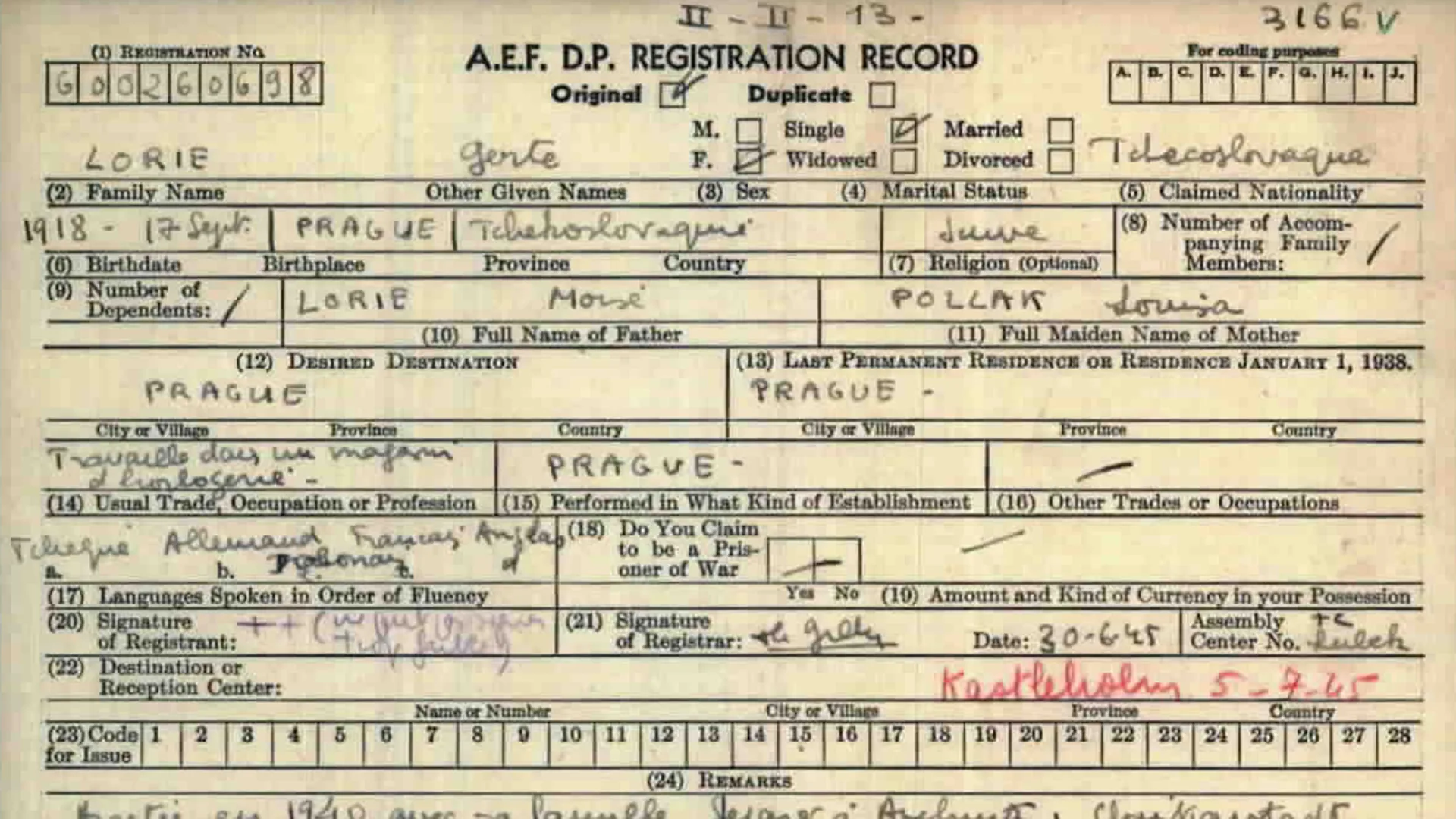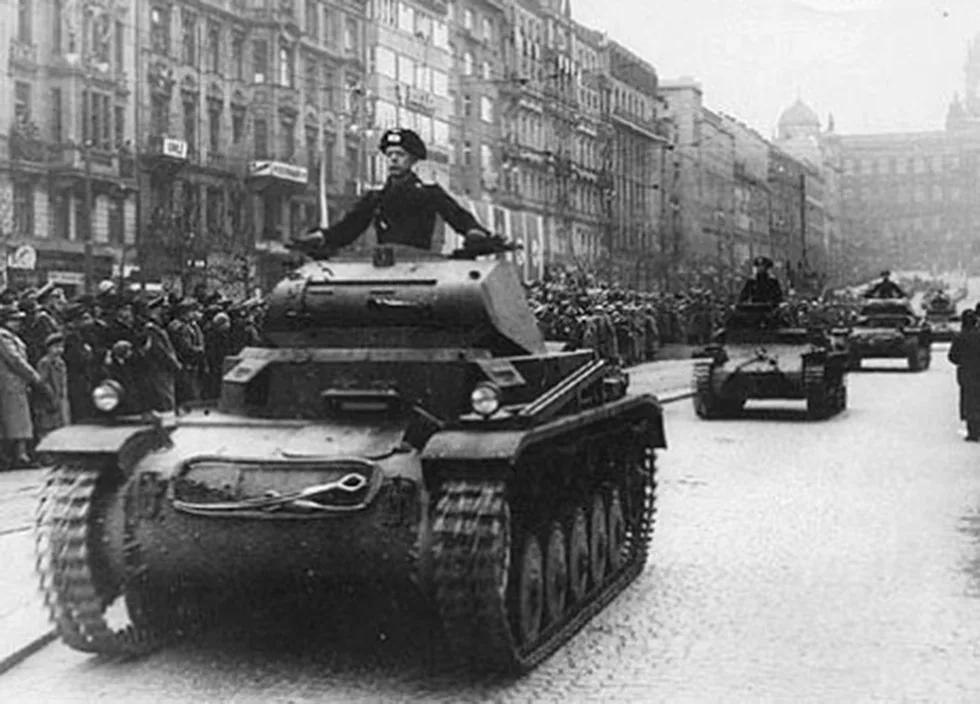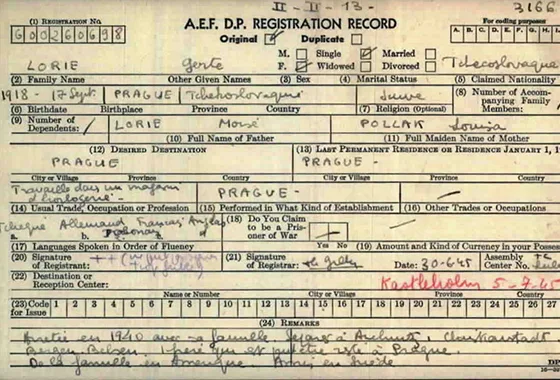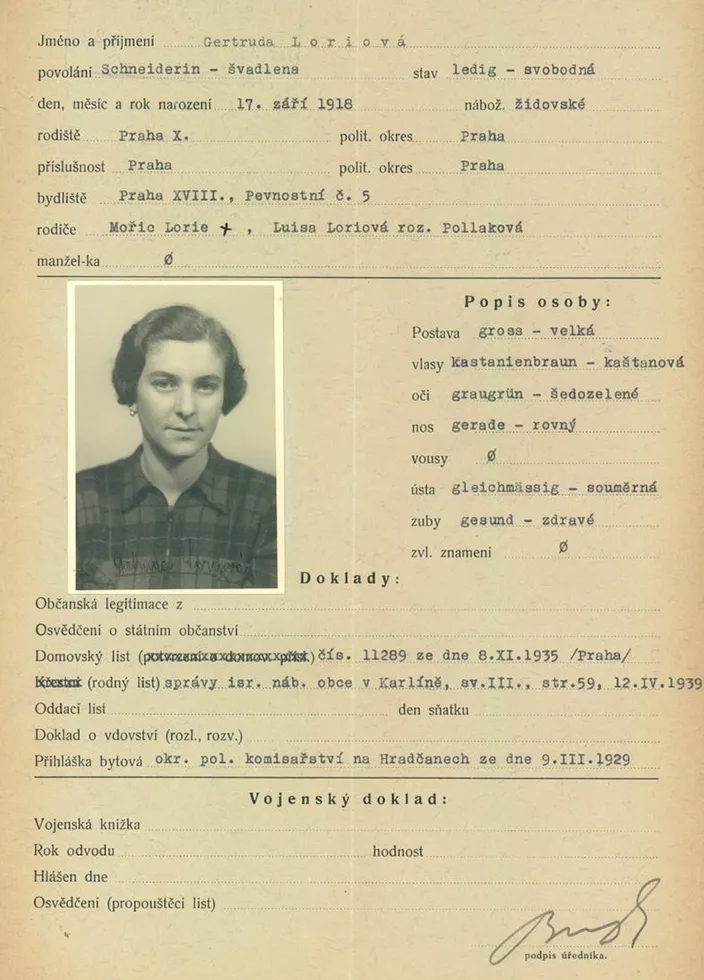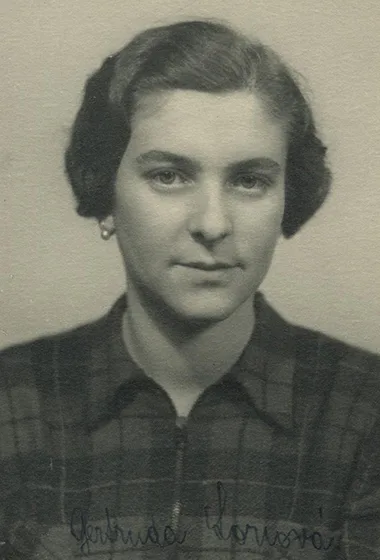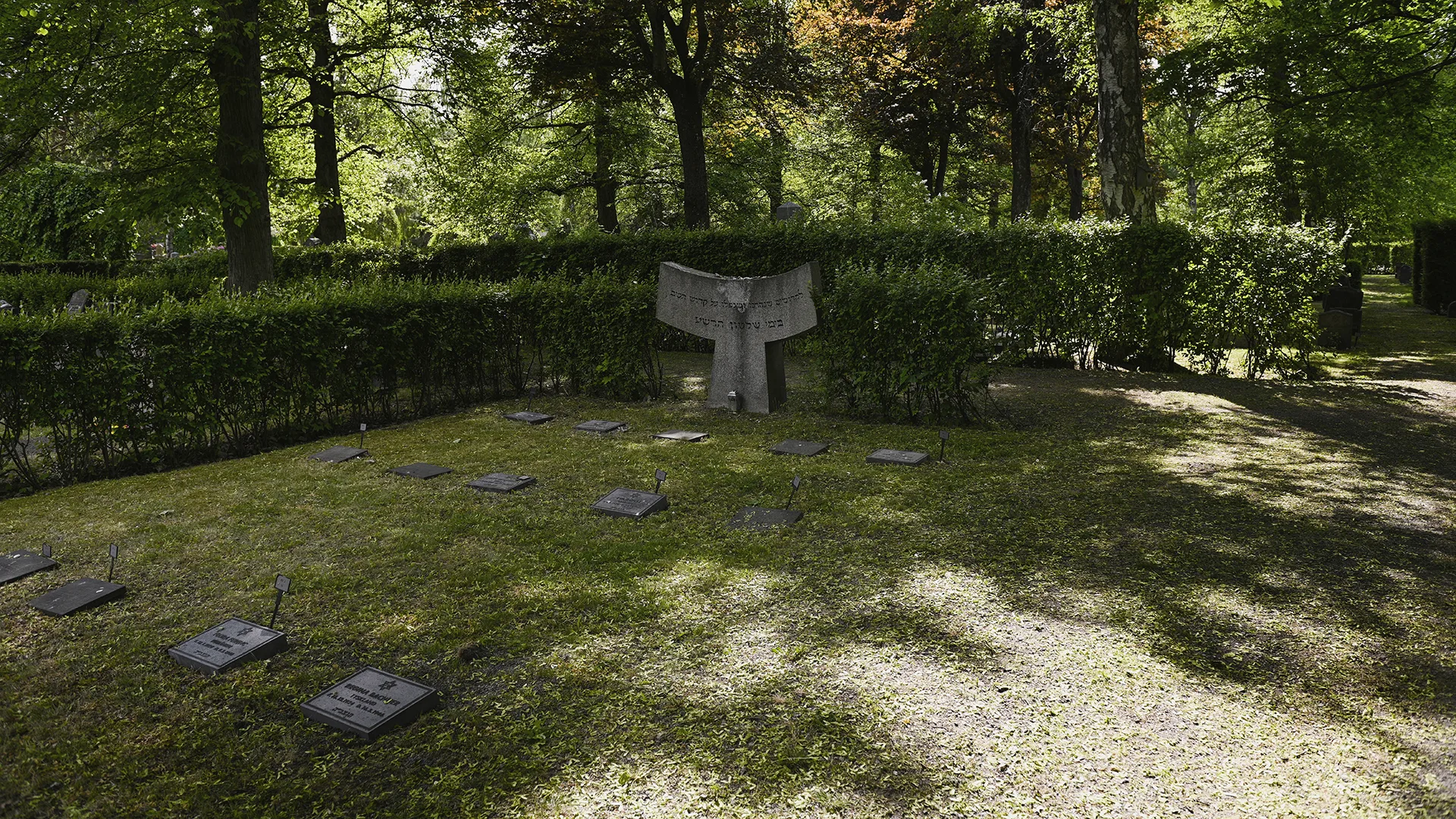Gerte was born in the beautiful city of Prague, the capital of Czechoslovakia, right at the end of World War I. The Lorie family lived a comfortable life in the city's affluent Střešovice district in a large villa. Her father Moric was the director of the Prague office for the large Italian insurance company Riunione Adriatica di Sicurtà until his death a few years before the outbreak of the war. Gerte and her family, like the majority of Jews in Prague, lived an assimilated and secularised Jewish life in the city. She had studied to be a seamstress and tailor, while her older brother Josef had followed in his father's footsteps and worked for the insurance company.
Gerte was 20 years old when the Nazis took power in her home town Prague on the 15th of March 1939. In 1938, Czechoslovakia had been forced to surrender the Sudetenland province, which bordered Germany, to the Germans. Now, without resistance, Germany occupied all Czech territory. At the same time, pro-German fascists in Slovakia declared independence from the Czech Republic. In just a few months, Czechoslovakia went from being a republic to an occupied German protectorate, the Reich Protectorate of Bohemia-Moravia.
For Gerte and the Jews of the Czech Republic, a slowly escalating wave of anti-Jewish persecution now began. Jews who had worked as doctors and lawyers lost their jobs while the Nuremberg Laws, which banned so-called mixed marriages, were now introduced. This was the beginning of a slow process in which, as had happened to Jews in Germany and Austria, Jews lost their jobs, businesses, property, homes and eventually, for the majority, their lives.
It started with just a few prohibitions, but over time the livelihood of Czech Jews was taken away. Profitable businesses were seized and expropriated, while Jews were arrested on a massive scale by the Gestapo and in many cases sent to concentration camps. The Jewish community in Prague was tasked with registering all Jews in the region along with information about their income, assets, households and family members. This was to facilitate the initial deportation of Jews to the east.
The situation escalated when war broke out in September 1939 and Poland was invaded. The Czech Republic's Jewish population had already started to lose their assets and homes. Now, they were gradually banned from visiting libraries, bathhouses and parks. The Lorie family lost their home and were forced to move to smaller apartments near Josefov, the old Jewish quarter. The large villa that had been their home now houses the Swiss Embassy in the Czech Republic. In September 1941, all Jews in the Protectorate were forced to wear yellow Stars of David with the word 'Jew' on their clothing.
The family deported on different trains
Her brother Josef converted to Catholicism, perhaps in an attempt to escape anti-Semitic persecution, but in vain. Prague's Jews were deported to the east, first to ghettos and eventually to the concentration camp. Gerte, Luisa and Josef were among the first 5,000 Jews from Prague to be deported, in late October and early November 1941. Gerte's uncle Oskar and his family were also among them. They were only allowed to take 50 kg of luggage and were led to an area of ruined wooden barracks in north-west Prague where they awaited deportation. SS personnel who encountered them forced the Jews to give up all their personal belongings.
Five trains left Prague, each with 1,000 Jews onboard. The family was separated and sent on different trains but managed to reunite at the final destination – the Łódź Ghetto.
The ghetto had already existed for almost a year and a half at this point. The Nazis had filled every part of the old and dilapidated Bałuty neighbourhood with tens of thousands of Jews, and now more inhabited the ghetto from different parts of occupied Europe. Conditions were severely cold, hunger was rampant and disease was spreading in the crowded houses. The Nazis were publicly executing people in the streets while the ghetto continued to overflow. For new arrivals like Gerte and her family, the shock must have been profound. The situation in Prague had been difficult, but nothing could compare to this. Gerte and Josef seem to have found work in the ghetto, which could be a lifeline for those who could find it.
We don’t know what happened to the family in the following years in the ghetto, where life continued despite the misery and starvation. In the autumn of 1942, thousands upon thousands of people from the ghetto were deported to death in the Chełmno extermination camp, mainly the young and vulnerable. Only those still considered fit for work were left alive. Here, the traces of her mother Luisa disappear but all indications suggest that she was murdered during the Holocaust.
Gerte and her brother seem to have survived in the ghetto until the summer of 1944. They were two of the 70,000 people left in the ghetto, which had a peak population of nearly 210,000. The Soviet success on the Eastern Front and the uprising in the Warsaw Ghetto by its remaining Jews led the Nazis to empty the Łódź Ghetto and deport its inhabitants in August 1944.
The Lorie siblings and others were deported from Łódź in freight wagons, from the same station their families were sent to die, to the Auschwitz-Birkenau concentration and extermination camp. Upon arrival, the majority were sent directly to the gas chambers. Both Lorie siblings survived selection but were separated. They never saw each other again.
Josef was sent to the Dachau concentration camp and its satellite camp Kaufering. There, he and other prisoners were forced to dig out giant bunkers, which were intended for bomb-proof factories for fighter planes. Conditions in the camp were horrendous in addition to the hard labour. Josef died in the camp on April 25, 1945, two days before it was liberated by the Allies. He was 30 years old.
Gerte was sent from Auschwitz to the Christianstadt labour camp in what is now Krzystkowice in western Poland. The camp was a so-called satellite camp of the large Gross-Rosen concentration camp, also in western Poland. Christianstadt was one of Nazi Germany's largest ammunition factories. We don't know how long Gerte was in the camp, but by February 1945, in the Nazi panic over the approach of Allied forces, the camp was emptied.
After harsh death marches, we know that the prisoners were eventually transported to Bergen-Belsen, where Gerte ended up. In the overcrowded and cramped camp, diseases such as dysentery, diphtheria, typhus and tuberculosis spread and killed thousands. Gerte became seriously ill with diphtheria.
Liberation and time in Sweden
On April 15, 1945, Bergen-Belsen was liberated by British forces. At that time, the camp held over 60,000 prisoners, most of them Jews and the majority in a terrible state of starvation and disease. Thousands of dead prisoners were lying unburied in the camp. Gerte and other surviving prisoners were moved out of the camp and received medical care. Meanwhile, the Allied forces tried to register all survivors. On her registration card, Gerte states that she wanted to go home to Prague, now the war was over. She was so weak at the time that she could not even sign her name.
Gerte was one of over 9,000 survivors who were brought to Sweden for treatment by UNRRA transportation. After a period in the transit camp and the Swedish field hospital in Lübeck, Gerte was taken to Sweden on the S/S Kastelholm on the July 5, 1945. The Kastelholm docked in Stockholm after a three-day voyage. Gerte was in such poor health that she was immediately sent to the Epidemic Hospital in Roslagstull, just a few kilometres from Frihamnen where the boat had arrived, on July 8, 1945. She was very weak, dull and pale, unable to sit up on her own and had severe breathing difficulties. The doctors at the hospital tried desperately to save her life, including blood transfusions, but on July 30, at 11.15 am she died from her severe injuries. Gerte was 26 years old.
Gerte appears to have been the only member of her family alive at the time of the liberation. In her and her family's case, there is no survivor who registered any of the family members in Yad Vashem. Traces of the existence of the Lorie family are the few documents that remain in the archives.
Gerte's route
The map shows the places Gerte was forcibly transferred or travelled to, from Prague where she was born to the Northern Jewish Cemetery. Click on the information symbol to see all the locations, listed in chronological order.
About Gerte Lorie
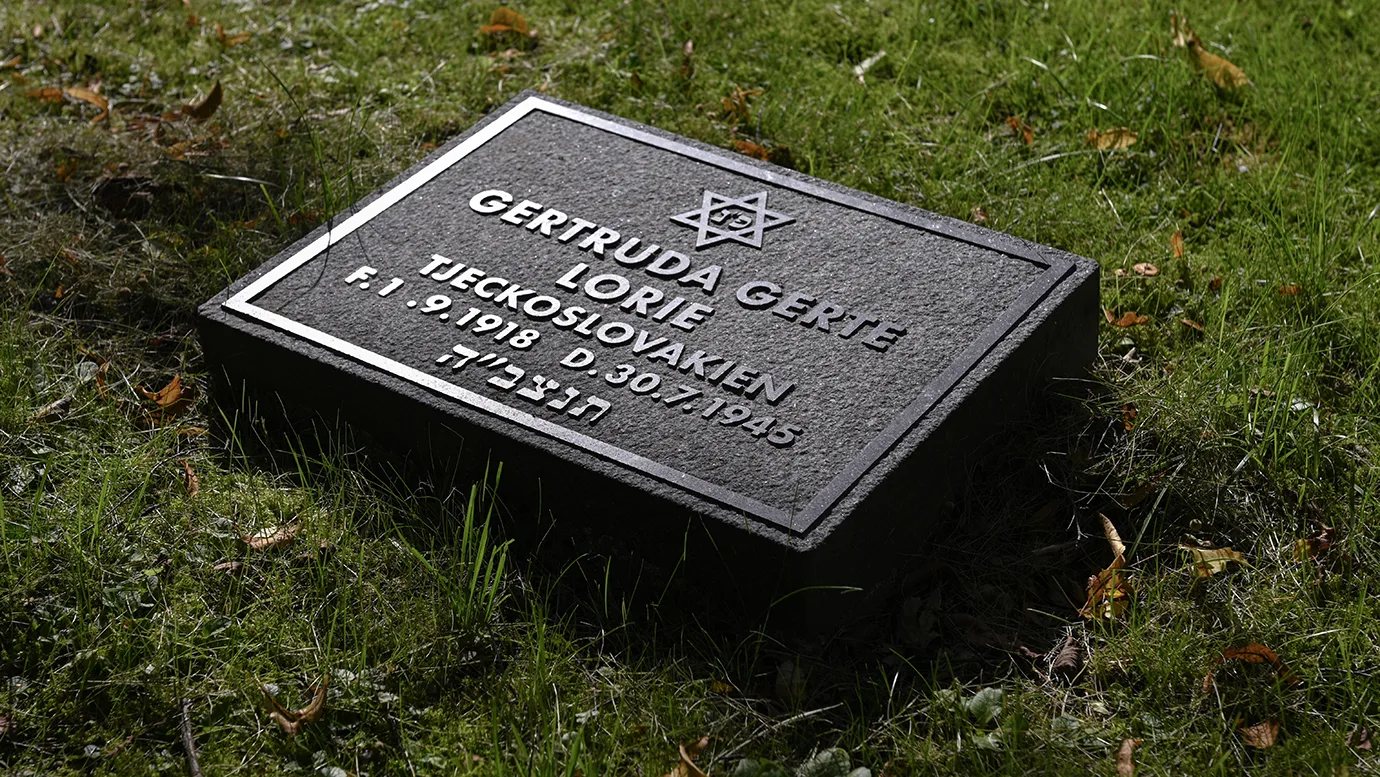
About Gerte's mother Luisa Lorie
About Gerte's father Moric Lorie
About Gerte's brother Josef Lorie
Learn more about the fates of other
Here you will find links to the "Förlorade röster" [Lost Voices] collection page as well as links to all the personal texts, listed by surname.
